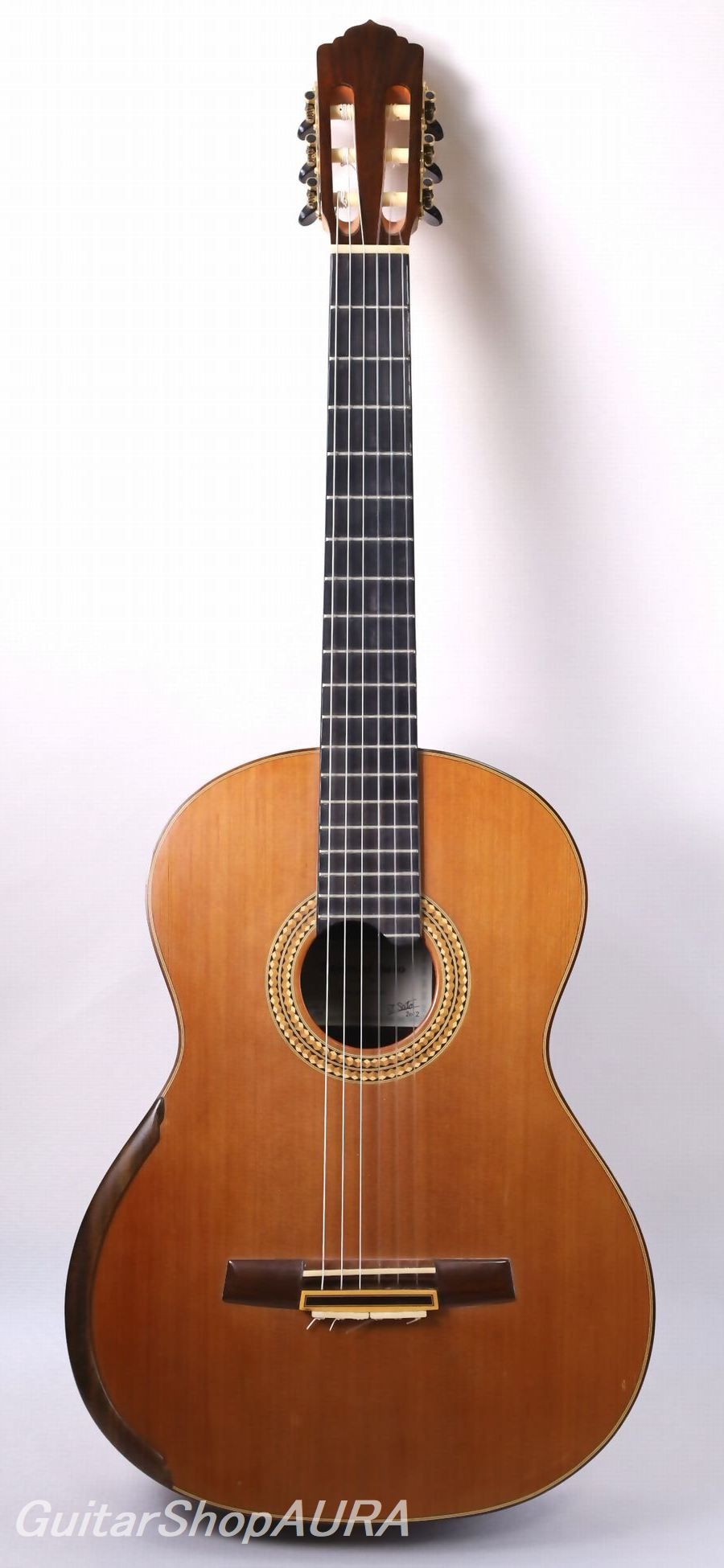
| Instrument | Takeshi Sato |
| Category | Japanese Classical Guitars 〔Used〕 |
| Number/Model | CL-S No.103 |
| Scale length | 650mm |
| Country | Japan |
| Year | 2012Year |
| Top | Solid Ceder |
| Side&Back | Solid South American Rosewood |
| Condition※ | 7 |
| List price | INQUIRE |
| Price (tax included) | Please Inquire |
| option | with Light form case |
Click to enlarge the photos below
Neck: Mahogany
Fingerboard: Ebony
Finish(Top): Lacquer
Finish(Back & Sides): Lacquer
Tuning Machines: ARIA
String Height(1st): 3.5mm
String Height(6th): 4.2mm
[Instrument Information]
This is a used Sato Tsuyoshi model CL-S No.103, made in 2012, from a workshop located in Hamamatsu City, Shizuoka Prefecture. According to the current official brand catalog, the top is Himalayan cedar, and the back and sides are Indian rosewood with the back being a carved arch-back design. However, this 2012 model likely uses laminated wood for the back, which is round-formed. The finish features a thick lacquer on the top and lacquer on the back and sides with a thinner, oil-finish-like texture.
An armrest is installed on the lower bass side bulge of the top plate to stabilize the right arm during playing. The bracing on the top plate consists of a solid brace about 2 cm thick above the waist area, providing strong support. Below the waist, there are 7 and 8 diagonal braces crossing each other, forming a lattice grid that evenly covers the lower part of the top plate—this is known as the Lattice Bracing System.
The combination of a thin top plate, thick back and sides, carved back, the armrest, and the lattice bracing aligns completely with the school of design pioneered by Australian luthier Greg Smallman. Acoustically, the guitar produces a distinctive sound that concentrates vibrational energy on the top plate and releases it explosively, reminiscent of a drum being struck—an iconic character of this structure.
There is a repaired crack over 20 cm long on the bass side of the bridge on the top plate; this is a crack in the thick lacquer finish and does not extend into the wood itself. The neck has a slight forward bow within normal tolerance. Frets show some wear on the 1st to 6th fret, and the fingerboard shows slight wear on the 1st to 9th frets, but these do not affect playability. The fingerboard has 20 frets on the treble side. The neck shape is a thin D-shape. The string height is 3.5 mm (1st string) and 4.2 mm (6th string) at the 12th fret, with 1.5 to 3.0 mm of saddle adjustment remaining.